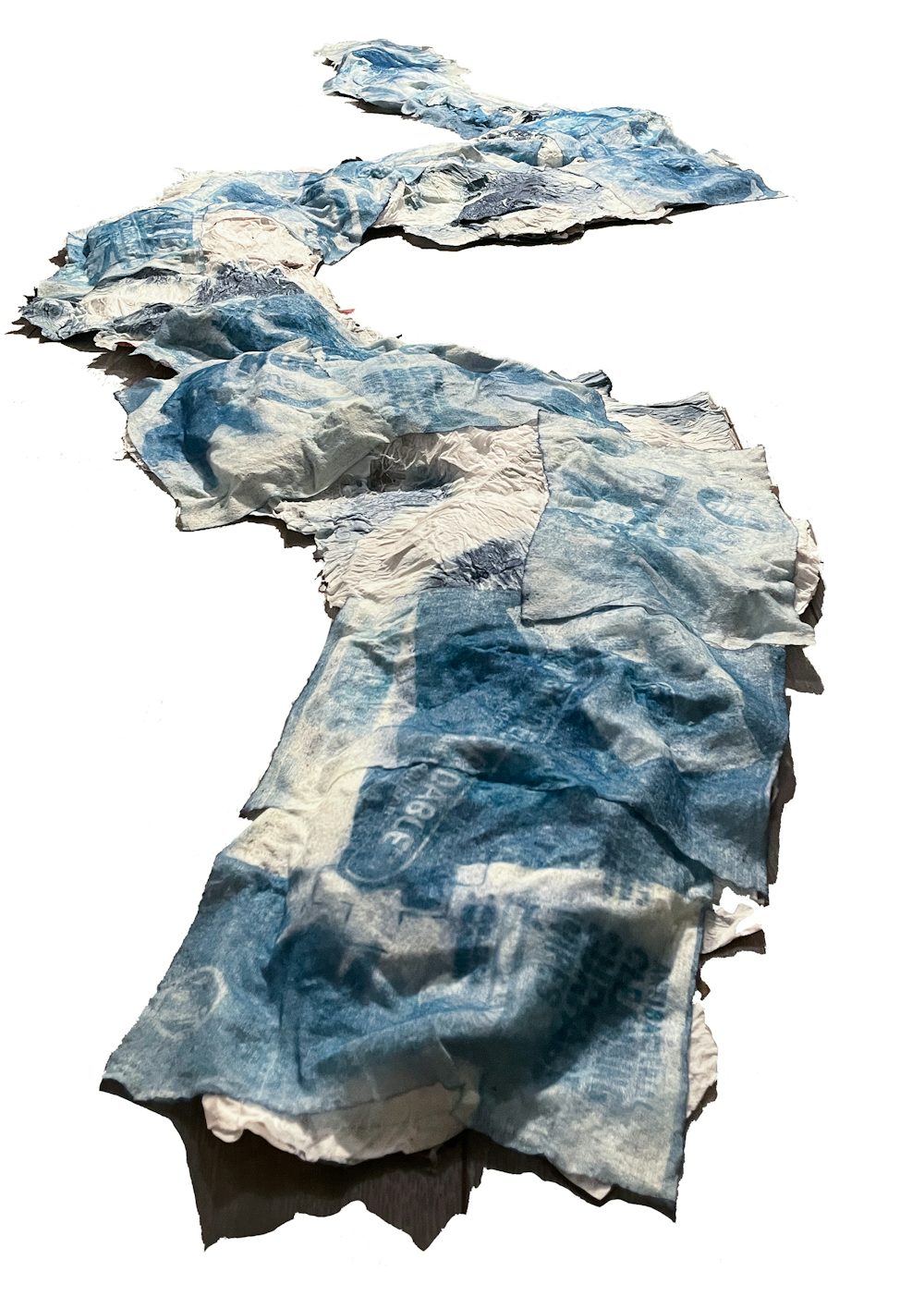Ruihao Yang
"Wet Wipes as Flushable Plastic"
Section MS6, Gabriella Demczuk
Keywords: environment, pollution, water, nature, photography, prints
A high abundance of flushable wet wipes flow through London's sewer and accumulate on the banks of the Thames River, creating what is known as ‘wet wipes reefs.’ The term ’flushable’ is misleading. It literally means it can be flushed down the toilet but it does not mean that it will biodegrade in the sewer. In reality, many wet wipes contain plastic components such as polyester that do not breakdown.
Wet wipes have become a growing problem and are a leading cause of harm to our water systems and our marine environments1. 11 billion wipes are used annually in the UK, equating to nearly 200 wipes per person. Once wet wipes enter our sewage system, they break down into microplastics, tiny fragments of plastic that find its way into the tissues of aquatic organisms, affecting their health and impacting the food chain.
This project focuses on the wet wipe pollution on the River Thames. Plastic packaging and waste found along the river are photographed and made into cyanotype prints. These prints, exposed directly onto wet wipes, are collaged into a long and serial ‘wet wipe reef,’ creating the shape of the River Thames.
Marine Conservation Society, “Our seas are swimming in wet wipes- it’s time to take action.” ↩



